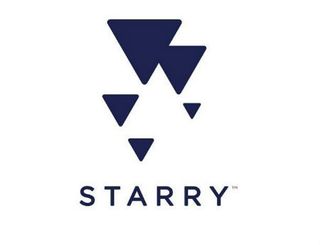Low Costs, Dense Markets Critical to Starry’s Success: Analyst

Starry, the startup helmed by former Aereo CEO Chet Kanojia that intends to put the hurt on incumbent broadband service providers with a wireless platform that relies on millimeter wave technology, has a shot at success and can become a market disruptor, if it’s able to pair deployments in high-density areas with a low-cost technology platform.
That’s according to a new report from Craig Moffett, analyst with MoffettNathanson, who recently spent a day with Starry in Boston, its headquarters and the site of its initial beta trial.
RELATED: Starry Eyes Wireless Broadband Alternative
“On paper, at least, fixed wireless has the potential to be the first low-cost alternative to wired broadband,” Moffett wrote, noting that AT&T and Verizon are already moving in that direction with 5G-focused trials. Google Fiber, meanwhile, is pursuing wireless as a lower-cost alternative.
RELATED: Verizon Exec: ‘Meaningful’ 5G Deployments to Start in 2018
With Boston, Starry is already focused on a high-density market (Starry plans to deploy across 17 metro areas if the trial in Beantown is successful), but its next key target, Moffett said, is driving down the technology costs.
With “all-in” costs for a base station at about $25,000 (comprised of a three-sector cell site where each “Starry Beam” costs $7,000 to $8000), the total cost to pass a home in a market like Boston could go as low as $10.
Multichannel Newsletter
The smarter way to stay on top of the multichannel video marketplace. Sign up below.
But Starry, which will also be saddled with tower rental costs estimated to be at $350 to $400 per month, is also focusing on cutting the costs of the customer premises equipment -- from about $1,000 today, to perhaps $200 per home.
“With costs that low, they [Starry] could profitably offer competitive broadband speeds for a fraction of the current price of wired broadband,” Moffett wrote, adding that service penetration will also be a “critical driver.”
Moffett said Starry’s ideal density for its build-out are areas with greater than 1,000 homes per square mile. The area it’s focused on in Boston, at 2,500-plus, soundly beats that target.
Using a cost model of $10 per home in an area of that density, Moffett said the all-in cost would be in the range of $33 per month, assuming a $500 piece of CPE, or $24, assuming a $200 piece of CPE.
Using a 5% penetration for 2,500 homes per square mile, it’s not “cheap enough to be compelling,” Moffett said.
But, at a 10% penetration, the all-in monthly costs for the $200 CPE case falls to $19 per month, and the $100 CPE case drops to just $16 in total costs per month.
“The key takeaway here is that low costs are everything,” Moffett wrote, noting that the current cost curves will require Starry initially focus on multiple-dwelling units, where it can amortize the costs over a minimum of three to four customers.
Moffett also shared some other details about Starry, which now has about 100 employees, has raised roughly $63 million, and hopes to pass about 500,000 homes in Boston this year and to focus initially on non-overbuilt parts of the city.
RELATED: Starry Lands $30M ‘B’ Round
The technology will rely on a “near line-of-sight,” point-to-multipoint system, and the company said the plan is to work with inexpensive spectrum, and not necessarily only unlicensed spectrum. Its platform uses LTE for out-of-band control and channel monitoring, Moffett explained.
RELATED: Kanojia Gave FCC's Wheeler Heads up About Starry
For the trial, Starry is rate-limiting customers, with most end-points running at 200 Mbps in the downstream and upstream direction. Moffett said he also saw test speeds in excess of 200 Mbps down from distances of more than 1 kilometer from the tower.
Starry, he said, is expecting low single digit penetration rates, but is seeing a much higher rate (in the range of 20% to 25%, and up to 50% in extreme cases) in its deployed buildings.
Starry currently isn’t charging customers for the trial and has not announced what its future pricing is, though Moffett said the company did mention price points as high as $50 per month or as low as $20, and that Starry intends to reduce friction with a self-install model.
But keeping the baseline expenses manageable will be key, as the costs for market entry have proven to be too steep for some would be broadband competitors.
“And that’s exactly what makes 5G fixed wireless so interesting…or, if you are a cable investor, so scary,” Moffett wrote.
Cable operators are also looking at 5G as an alternative way to deliver broadband service into the home and see the backhaul requirements for 5G as a major business opportunity.
But some MSOs are also downplaying the competitive threat that 5G presents as a fixed wireless alternative to broadband service when used in lofty frequency ranges.
“I don't believe, at this stage…that it's a significant threat in regards to the wireless fixed broadband side,” Dave Watson, Comcast Cable’s president and CEO, said Thursday on the company’s Q1 earnings call.
